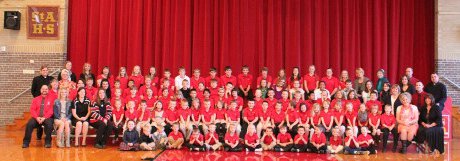- Home
-
About
 Fidelity & Excellence
Fidelity & ExcellenceThomas Aquinas College is unique among American colleges and universities, offering a faithfully Catholic education comprised entirely of the Great Books and classroom discussions.
-
A Liberating Education
 Truth Matters
Truth MattersTruth, and nothing less, sets men free; and because truth is both natural and supernatural, the College’s curriculum aims at both natural and divine wisdom.
-
A Catholic Life
 Under the Light of Faith
Under the Light of FaithThe intellectual tradition and moral teachings of the Catholic Church infuse the whole life of Thomas Aquinas College, illuminating the curriculum and the community alike.
-
Admission & Aid
 Is TAC Right for You?
Is TAC Right for You?Do you enjoy grappling with complex questions? Are you willing to engage in discussions about difficult concepts, with the truth as your ultimate goal?
-
Students & Parents
 Mind, Body & Spirit
Mind, Body & SpiritThere is always something to do at TAC — something worthwhile, something fulfilling, and something geared toward ever-greater spiritual and intellectual growth.
-
Alumni & Careers
 What Can You Do with a Liberal Education?
What Can You Do with a Liberal Education?Nothing speaks more to the versatility of the College’s academic program than the good that our alumni are doing throughout the Church and the world.
- Search
- Giving
Alumni Lead Restoration of Classical Liberal Education
For administrators at St. Anthony Catholic School in Sterling, Colo., the situation was bleak. Facing financial peril, the elementary school considered shutting its doors earlier this year. Then, administrators decided to try something new — which, in fact, was really something quite old.
Like many Catholic schools across the country, St. Anthony’s is going back to its roots by embracing the Church’s patrimony of liberal education. “We’ve always distinguished ourselves by our faith, but also academically. We thought this was the best thing,” says Principal Joseph Skerjanec in a Catholic News Agency article. “The purpose of education ultimately is to get to heaven, and we feel this is the best route for us to do that.”
St. Anthony’s is gradually transitioning to a classical curriculum, one that utilizes the great books and which is aimed at teaching students how to think critically by way of the liberal arts. Perhaps not coincidentally, the pedagogical shift has accompanied a tremendous fundraising campaign — which set out to garner $600,000, but yielded $1.1 million — and the renewal of St. Anthony Catholic School.
Assisting St. Anthony’s in its tradition is an alumnus and tutor of Thomas Aquinas College, Dr. Andrew Seeley (’87), who also serves as the executive director of the Institute for Catholic Liberal Education. Dr. Seeley has prepared the school’s staff to teach from a classical curriculum.
Dr. Seeley is just one of many Thomas Aquinas College alumni who are playing an active role in the resurgence of classical education at Catholic elementary and high schools. To name just a few:
- Laura Berquist (’75) founded the international online distance-learning program Mother of Divine Grace School.
- Marguerite (Ford ’79) Grimm is the headmaster of Saint Monica Academy in Pasadena, Calif.
- Michael Van Hecke (’86) is the headmaster at St. Augustine Academy in Ventura, Calif.
- Luke Macik (’87) and Mark Langley (’89) are the headmaster and academic dean, respectively, of The Lyceum in Euclid, Ohio.
- Luke Culley (’94) and Sean Fitzpatrick (’02) have founded Gregory the Great Academy in Falls Church, Va.
- Rev. Mark Moriarty (’95) is the superintendent of St. Agnes School in St. Paul, Minn., and the pastor of the parish.
Many more alumni are also teaching at such schools. Eight members of last year’s Class of 2013, for example, accepted positions at schools with classical curricula. Six of those were at the Great Hearts Academies in Arizona, where some 17 alumni teach, and one graduate serves as an assistant headmaster. A restoration in classical liberal education is under way, and Thomas Aquinas College alumni are at its forefront.


